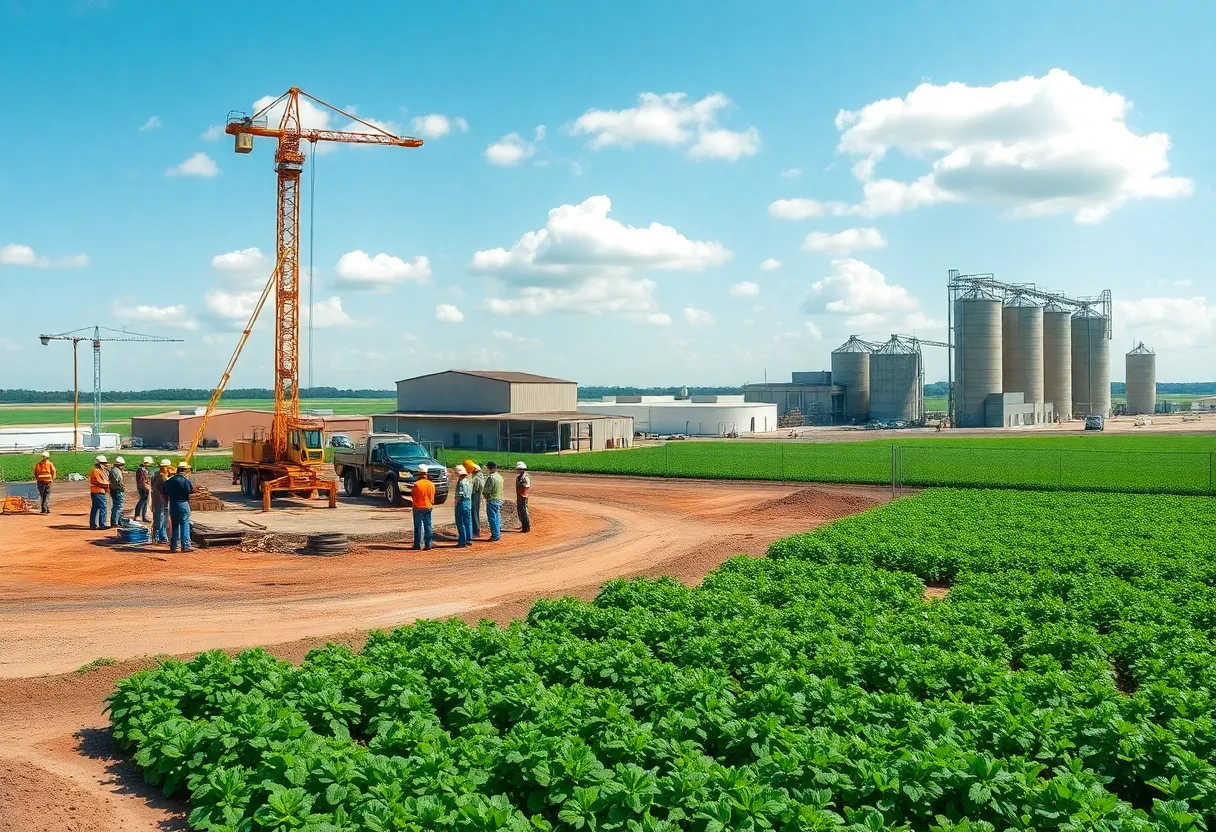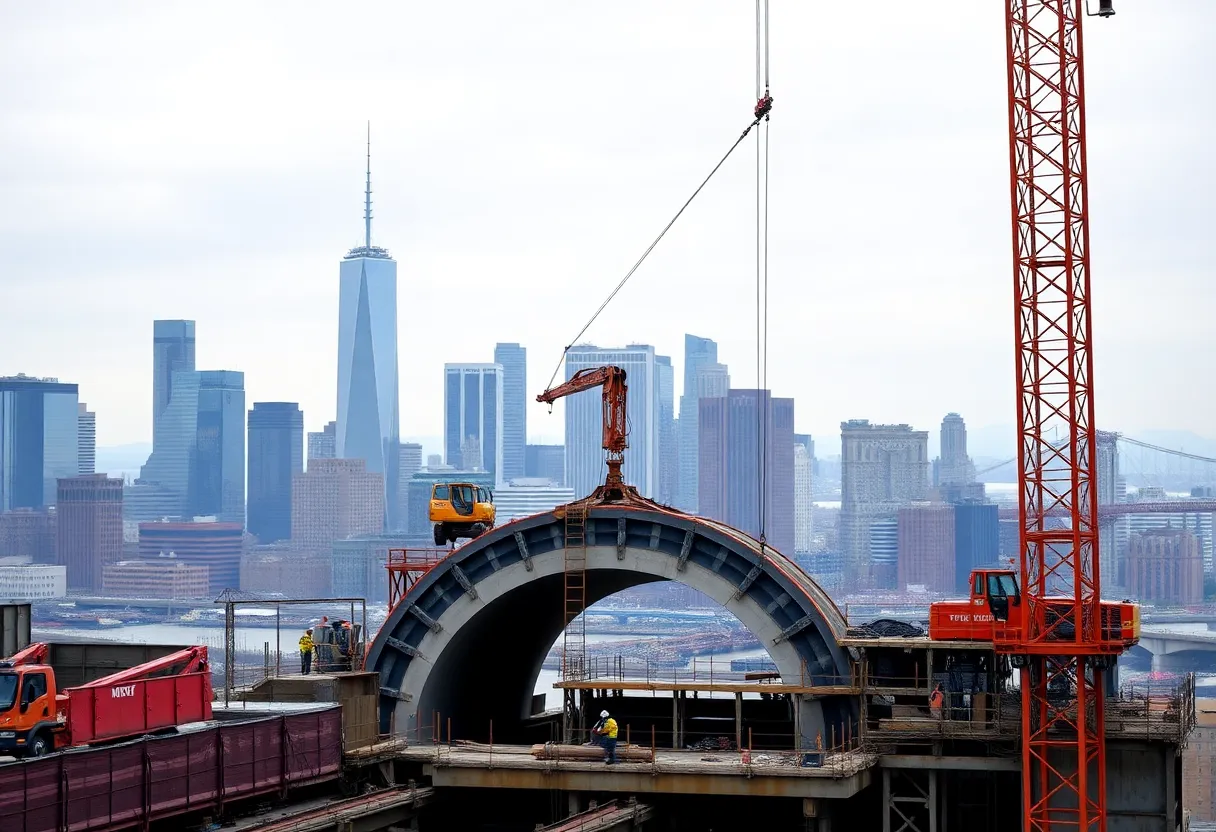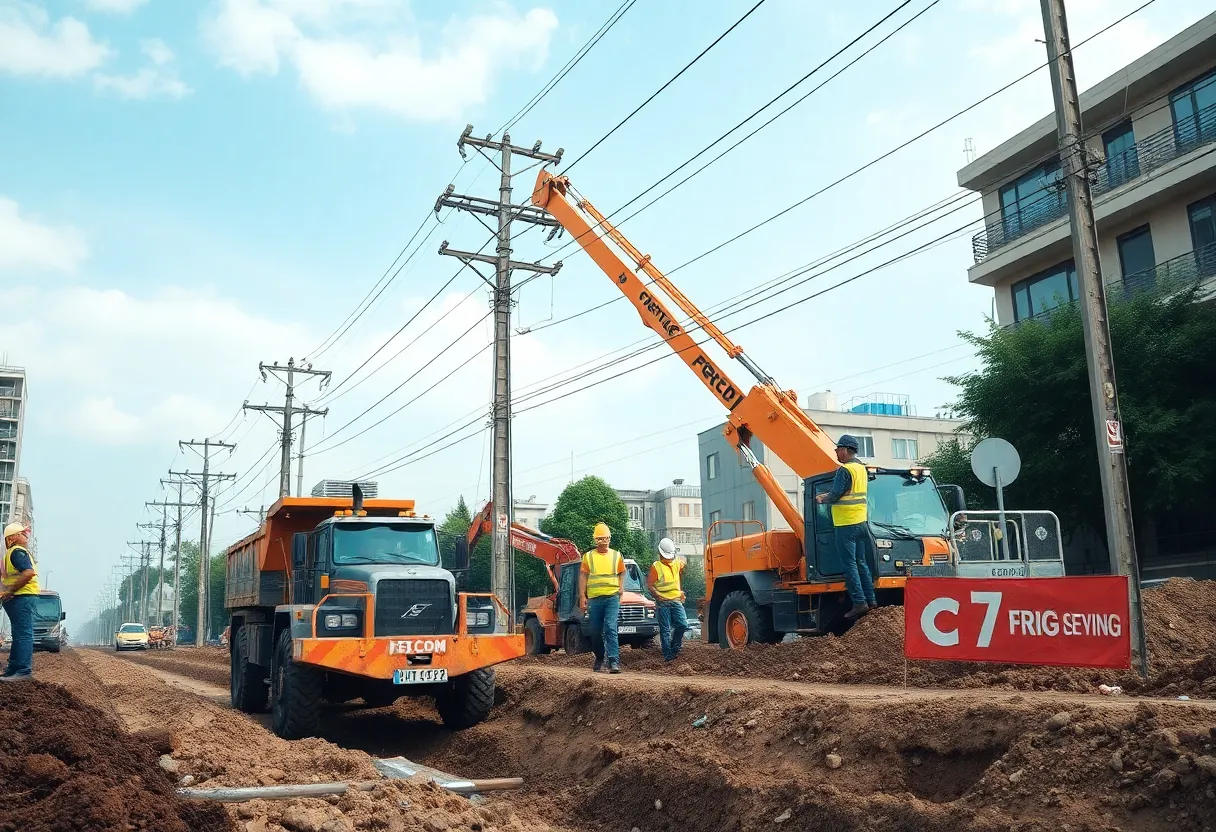Grand Forks, North Dakota, October 4, 2025
News Summary
A tightening labor market is reshaping North Dakota as nationwide construction shortages, rising wages and expanded training collide with a major industrial investment. The construction sector faces a national shortfall of about 400,000 workers while North Dakota average wages rose 4.6%. Local firms report gaps in field supervision, project management and skilled trades and are expanding apprenticeships, campus hiring and outreach. Education programs are scaling up and the planned $450 million Agristo processing facility in Grand Forks — requiring thousands of acres of potatoes and projected to create 200–300 jobs — is prompting regional workforce and agricultural planning.
Construction labor shortages, rising wages, expanded training programs and Agristo’s $450M Grand Forks plant underscore North Dakota workforce shifts
The region is seeing several major workforce changes at once: a nationwide shortfall in construction workers, steady wage gains in North Dakota, growing training and apprenticeship programs, and a large new food-processing investment in Grand Forks. The construction industry is facing a labor shortage of about 400,000 workers, according to the Bureau of Labor Statistics. At the same time, the average annual wage in North Dakota increased from $59,050 to $61,810 in the past year, a 4.6% increase, and employers are expanding entry-level hiring and training to build long-term pipelines.
What employers are finding and doing
The hardest positions to fill in the region’s construction industry are field supervision and project management roles. Local and regional contractors say superintendent and other field-supervision posts are repeatedly the most difficult to staff, and firms are putting more energy into early-career hiring and apprenticeship pathways to fill those gaps.
One national training group recently noted a high-demand/low-supply market for field supervision and forecasted the problem will worsen as more workers hit retirement age. That projection lines up with what hiring managers see on job boards: more people are leaving the trades than are entering them, so the gap widens unless the pipeline grows.
Employers are responding in several practical ways. Internships and campus hiring are a main part of talent strategies. Some contractors have expanded internship programs year over year to feed both field and project-management pipelines. Other firms have built registered apprenticeship programs that combine classroom time with on-the-job work so entry-level hires can earn while they learn basic carpentry and other trade skills.
Trade unions and union contractors are also active in outreach. Union groups cover many craft disciplines and run classroom training tied to on-the-job experience. Contractors that work with unions report that unions help promote the trades to students and communities and supply a steady stream of trained craft workers.
Training, schools and tech
State and regional universities and trade programs are updating classes and labs to match industry needs. A state university construction department keeps courses current with industry standards and technology, uses industry advisory input every year, and maintains labs with GPS units, drones, VR setups and testing rigs for hands-on learning. A new $100 million engineering building is scheduled to open in fall 2026 and will include dedicated labs for virtual reality and visualization to support construction training.
Another regional university has built a specialized concrete industry management program that grew from a handful of students to a large enrollment in a short time. That program teaches ready-mix plant operations, concrete testing and project-level quality control and is supported by the concrete industry to meet workforce needs.
Wages, jobs and local economy
North Dakota saw employment rise in 2024, with employment increasing 1.7% compared to one year prior, a gain of 7,053 jobs. Construction was among the industries with the largest gains, and construction and extraction occupations in the state reported rising averages. Employers note that wages have lifted across many fields, making trades more competitive with other career paths.
Local workforce offices say unemployment remains very low and that job postings in the state system show fewer than half a resume per opening on average, signaling a shortage of applicants for posted jobs. Labor force participation among youth is relatively high, but employers still say more people are needed to fill open roles.
Large private investment shifts local demand
A major private investment is adding new demand for jobs and broader supply-chain work in the region. Agristo’s planned U.S. facility represents a USD 450 million investment, and Agristo’s Grand Forks site is on a 360-acre plot. Site preparation has begun and a ceremonial groundbreaking is set for spring 2026 as the project moves into full-scale construction.
The Grand Forks facility will produce a range of frozen potato products for the North American retail market and will require local supply of potatoes and labor. The Grand Forks facility is projected to generate over 200 jobs upon launch and scale to more than 300 positions at full production. Growers are already scaling up seed production to meet needs, and the fall 2027 crop is earmarked to supply the facility for its planned opening in January 2028.
Retention and future needs
Retaining skilled staff is a key strategy for many firms. Companies work to offer interesting work, steady career paths, leadership training and a positive culture to keep people long term. Employers also say they need more technical skill sets as projects become more complex, including basic awareness of how artificial intelligence tools can support project work.
In short, the labor picture combines short-term gaps with long-term efforts: rising wages and new hires are balancing a nationwide shortfall, while expanded training, apprenticeships and large local investments are reshaping demand and creating more career paths in the trades.
Frequently Asked Questions
How large is the national construction worker shortfall?
The construction industry is facing a labor shortage of about 400,000 workers, according to the Bureau of Labor Statistics.
How much is Agristo investing in Grand Forks?
Agristo’s planned U.S. facility represents a USD 450 million investment.
How large is the Agristo site?
Agristo’s Grand Forks site is on a 360-acre plot.
How many jobs will the Agristo plant create?
The Grand Forks facility is projected to generate over 200 jobs upon launch and scale to more than 300 positions at full production.
When is the Agristo ceremonial groundbreaking?
A ceremonial groundbreaking for Agristo in Grand Forks is scheduled for April 2026, signaling transition to full-scale construction.
When is the Agristo facility expected to open and where will supply come from?
The fall 2027 crop is earmarked to supply the facility for its planned opening in January 2028.
How much did North Dakota wages change in the last year?
The average annual wage in North Dakota increased from $59,050 to $61,810 in the past year, a 4.6% increase.
How did state employment change in 2024?
In 2024, North Dakota employment increased 1.7% compared to one year prior, a gain of 7,053 jobs.
Which roles are the hardest to fill locally?
The hardest positions to fill in the region’s construction industry are field supervision and project management roles.
What did NCCER say about supervision roles?
The National Center for Construction Education and Research (NCCER) recently noted a high-demand/low-supply market for field supervision and forecasted the problem will worsen as more workers hit retirement age.
{
“@context”: “https://schema.org”,
“@type”: “FAQPage”,
“mainEntity”: [
{
“@type”: “Question”,
“name”: “How large is the national construction worker shortfall?”,
“acceptedAnswer”: {
“@type”: “Answer”,
“text”: “The construction industry is facing a labor shortage of about 400,000 workers, according to the Bureau of Labor Statistics.”
}
},
{
“@type”: “Question”,
“name”: “How much is Agristo investing in Grand Forks?”,
“acceptedAnswer”: {
“@type”: “Answer”,
“text”: “Agristou2019s planned U.S. facility represents a USD 450 million investment.”
}
},
{
“@type”: “Question”,
“name”: “How large is the Agristo site?”,
“acceptedAnswer”: {
“@type”: “Answer”,
“text”: “Agristou2019s Grand Forks site is on a 360-acre plot.”
}
},
{
“@type”: “Question”,
“name”: “How many jobs will the Agristo plant create?”,
“acceptedAnswer”: {
“@type”: “Answer”,
“text”: “The Grand Forks facility is projected to generate over 200 jobs upon launch and scale to more than 300 positions at full production.”
}
},
{
“@type”: “Question”,
“name”: “When is the Agristo ceremonial groundbreaking?”,
“acceptedAnswer”: {
“@type”: “Answer”,
“text”: “A ceremonial groundbreaking for Agristo in Grand Forks is scheduled for April 2026, signaling transition to full-scale construction.”
}
},
{
“@type”: “Question”,
“name”: “When is the Agristo facility expected to open and where will supply come from?”,
“acceptedAnswer”: {
“@type”: “Answer”,
“text”: “The fall 2027 crop is earmarked to supply the facility for its planned opening in January 2028.”
}
},
{
“@type”: “Question”,
“name”: “How much did North Dakota wages change in the last year?”,
“acceptedAnswer”: {
“@type”: “Answer”,
“text”: “The average annual wage in North Dakota increased from $59,050 to $61,810 in the past year, a 4.6% increase.”
}
},
{
“@type”: “Question”,
“name”: “How did state employment change in 2024?”,
“acceptedAnswer”: {
“@type”: “Answer”,
“text”: “In 2024, North Dakota employment increased 1.7% compared to one year prior, a gain of 7,053 jobs.”
}
},
{
“@type”: “Question”,
“name”: “Which roles are the hardest to fill locally?”,
“acceptedAnswer”: {
“@type”: “Answer”,
“text”: “The hardest positions to fill in the regionu2019s construction industry are field supervision and project management roles.”
}
},
{
“@type”: “Question”,
“name”: “What did NCCER say about supervision roles?”,
“acceptedAnswer”: {
“@type”: “Answer”,
“text”: “The National Center for Construction Education and Research (NCCER) recently noted a high-demand/low-supply market for field supervision and forecasted the problem will worsen as more workers hit retirement age.”
}
}
]
}
Key features at a glance
| Feature | Detail |
|---|---|
| Nationwide construction gap | About 400,000 worker shortfall (BLS) |
| North Dakota wage change | Average annual wage rose from $59,050 to $61,810 (4.6%) |
| Agristo investment | USD 450 million plant on a 360-acre site in Grand Forks |
| Jobs from Agristo | Over 200 jobs at launch; scale to more than 300 at full production |
| Hard-to-fill roles | Field supervision and project management |
| Training responses | Internships, registered apprenticeships, updated university labs |
| Major state employment change | Employment up 1.7% in 2024, a gain of 7,053 jobs |
Deeper Dive: News & Info About This Topic
Additional Resources
- PotatoPro: Agristo launches major U.S. expansion — Grand Forks potato plant
- Wikipedia: Agristo Grand Forks potato plant
- Grand Forks Herald: Statistics show North Dakota worker paychecks continue to rise on average
- Google Search: North Dakota average wage 2024
- Grand Forks Herald: RJ Zavoral & Sons built on family and driven by excellence
- Google Scholar: RJ Zavoral Sons Grand Forks construction
- City of Grand Forks: Business — Bids & RFP
- Encyclopedia Britannica: Grand Forks bids RFP
- Minot Daily News: Temporary B-1 relocation to Grand Forks approved
- Google News: Temporary B-1 relocation Grand Forks
Author: Construction NY News
The NEW YORK STAFF WRITER represents the experienced team at constructionnynews.com, your go-to source for actionable local news and information in New York and beyond. Specializing in "news you can use," we cover essential topics like product reviews for personal and business needs, local business directories, politics, real estate trends, neighborhood insights, and state news affecting the area—with deep expertise drawn from years of dedicated reporting and strong community input, including local press releases and business updates. We deliver top reporting on high-value events such as the New York Build Expo, infrastructure breakthroughs, and cutting-edge construction technology showcases. Our coverage extends to key organizations like the Associated General Contractors of New York State and the Building Trades Employers' Association, plus leading businesses in construction and real estate that power the local economy such as Turner Construction Company and CMiC Global. As part of the broader network, including constructioncanews.com, constructiontxnews.com, and constructionflnews.com, we provide comprehensive, credible insights into the dynamic construction landscape across multiple states.





